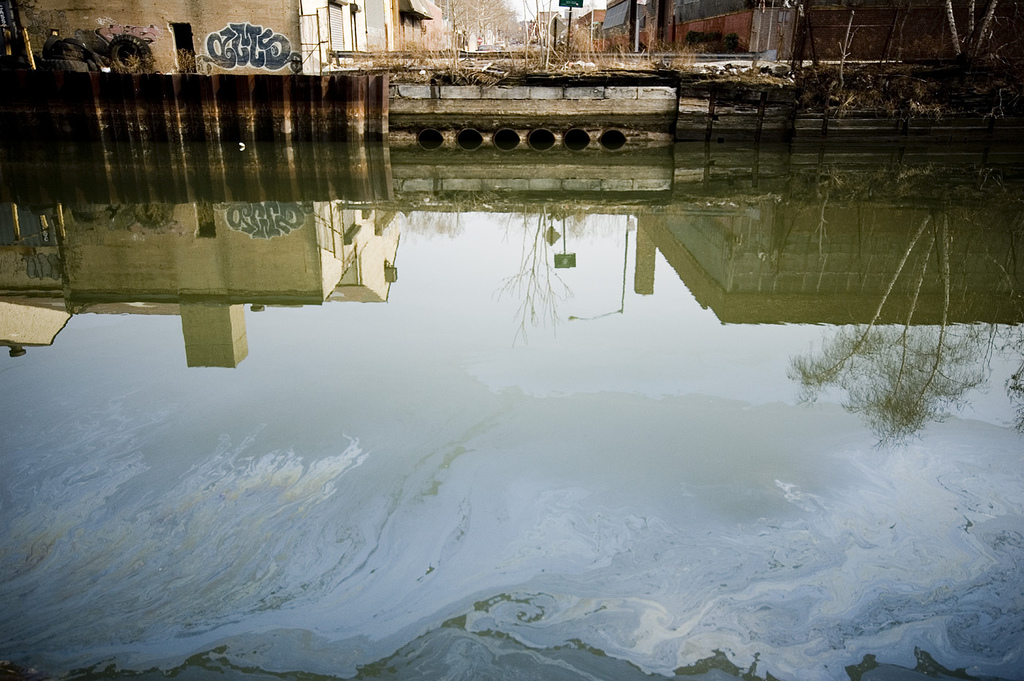
Many of us take for granted the relatively seamless workings of our infrastructure – sewage systems, for instance. Yet in New York City, and particularly Brooklyn’s Gowanus Canal, the system is far from seamless. In fact, the reality is both alarming and a major public health hazard.
It takes as little as one-twentieth of an inch of rainfall to overwhelm New York City’s sewer systems. When this happens, it triggers the Combined Sewage Overflow – or CSO – system. CSOs then discharge raw sewage into outfalls on the edges of the city. According to the New York State Department of Environmental Protection, CSOs are the single largest source of pathogens in the New York Harbor.
The Gowanus Canal is the epicenter of this unhealthy scenario. Each year, 377 million gallons of diluted raw sewage flow into the canal from 13 CSOs. There is so much bacteria and pollution in this water that drinking it could transmit gonorrhea or dysentery. Sediments at the bottom of the canal are chock-full of heavy metals and carcinogenic compounds.
Despite the overloaded sewer system, building in the area continues, including plans for a 700-unit canal-side ‘luxury’ apartment complex. The real estate company insists it’s sinking tens of millions of dollars into new sewage infrastructure that will make the property hygienic – and stench-free.
For its part, New York City is experimenting with constructed marshlands – or “sponge parks” – that it hopes will act as bioretention basins, reducing contamination and mitigating overflow. If successful, this nature-based solution could potentially help the countless other cities across the country dealing with similar problems.
**********
.
Web Links
If It’s Raining, NYC’s Raw Sewage Is Probably Pouring Into the Waterways
Photo, posted March 10, 2007, courtesy of Missy S. via Flickr.
.
Earth Wise is a production of WAMC Northeast Public Radio, with script contribution from the Cary Institute of Ecosystem Studies.